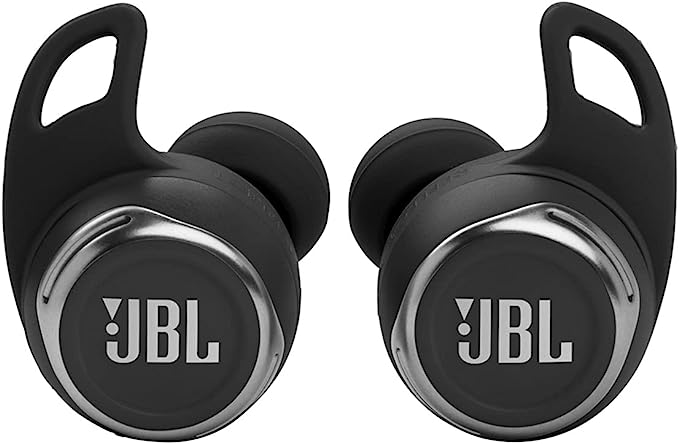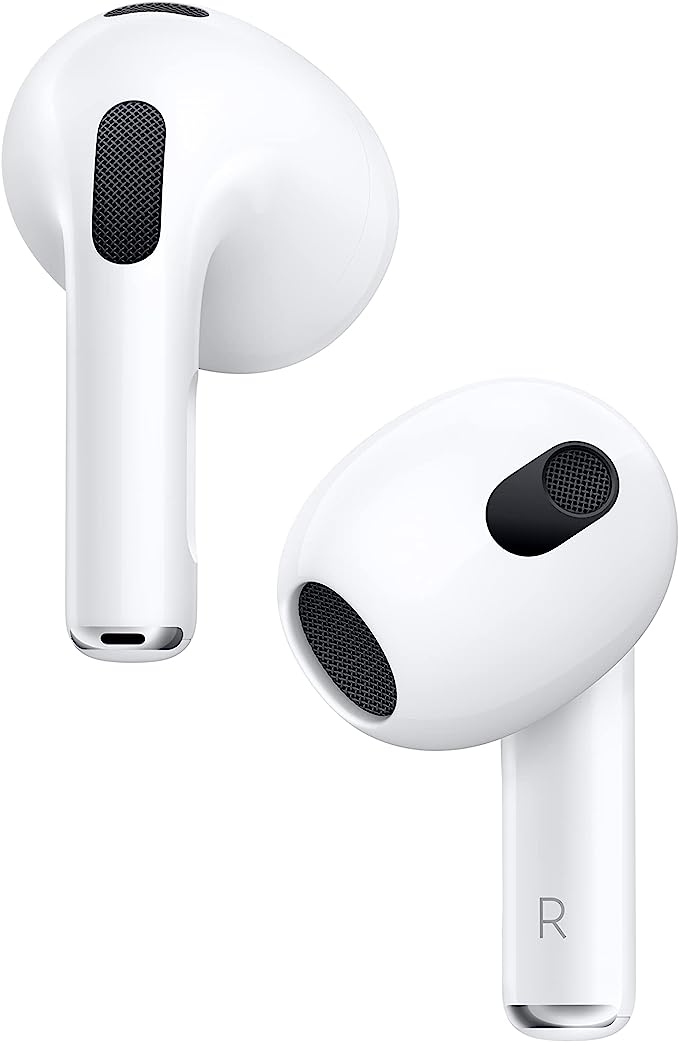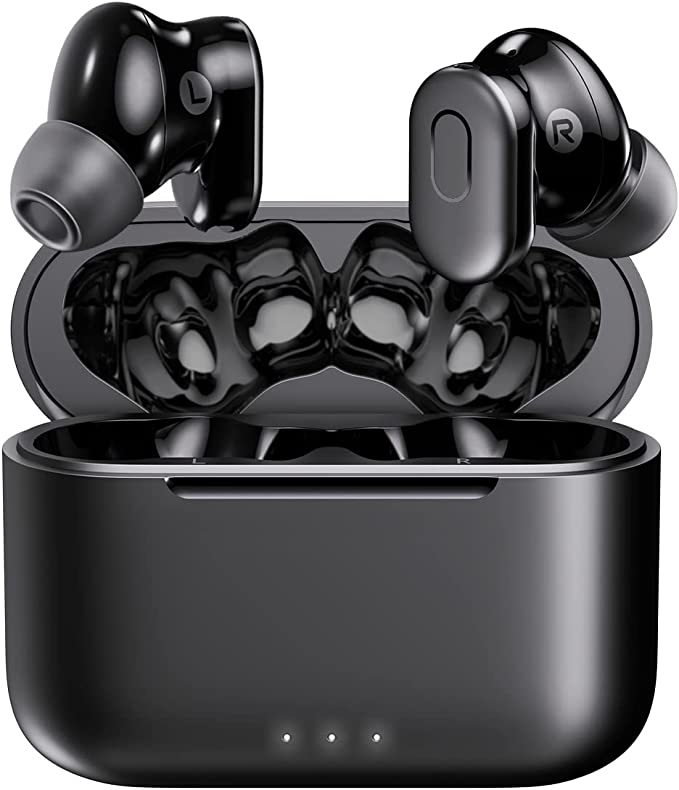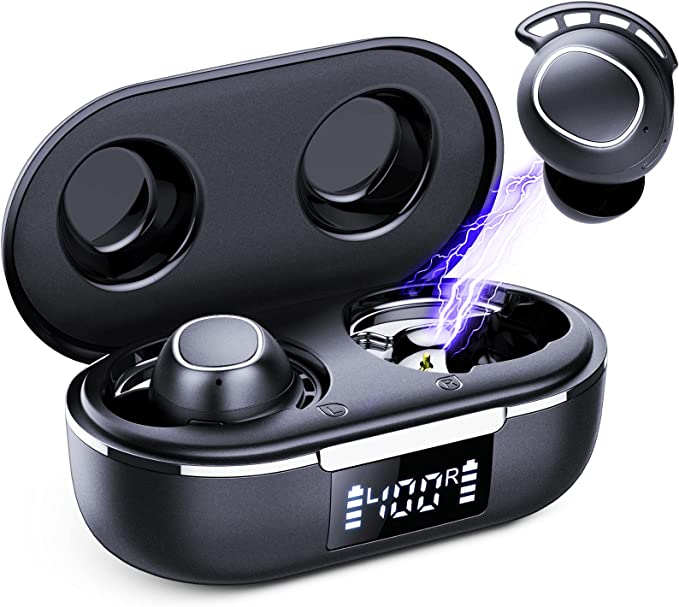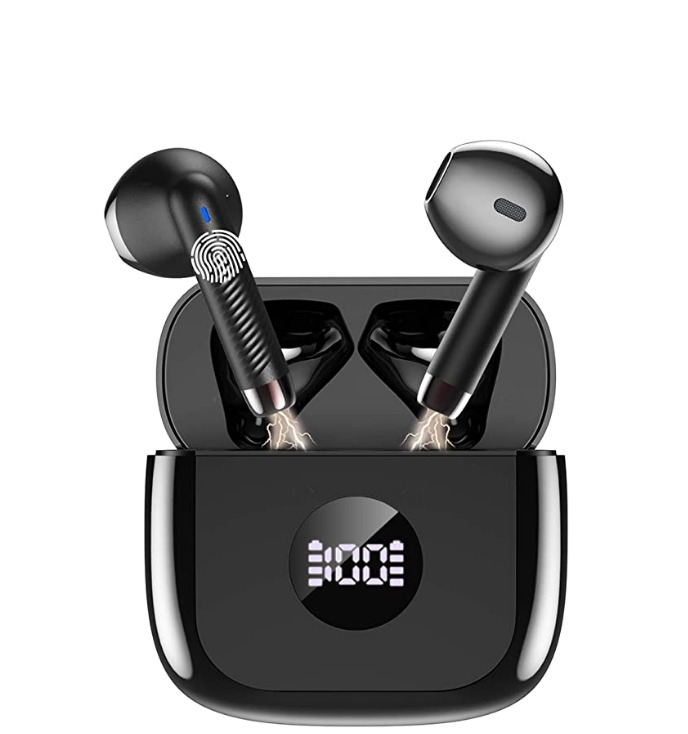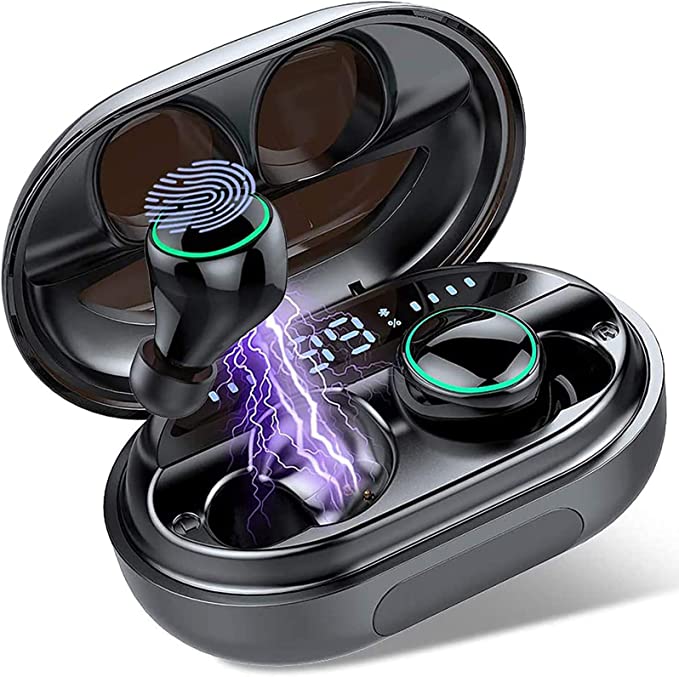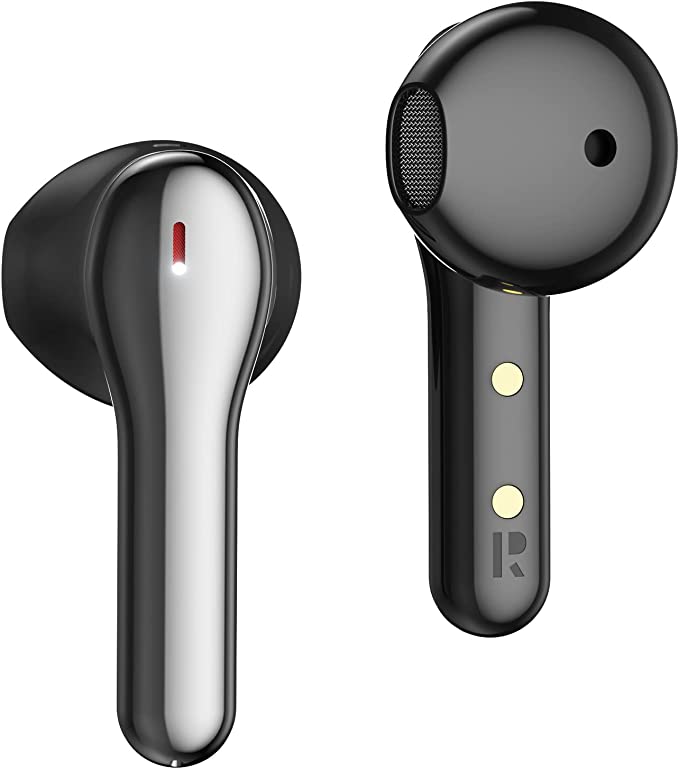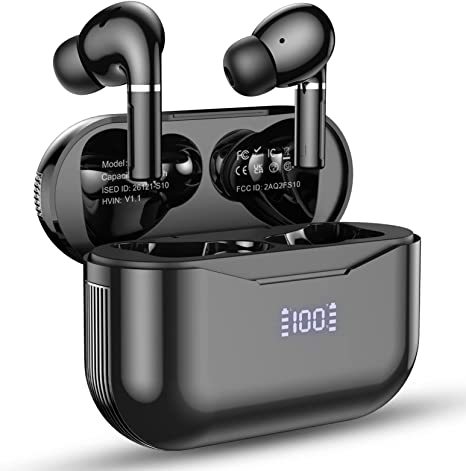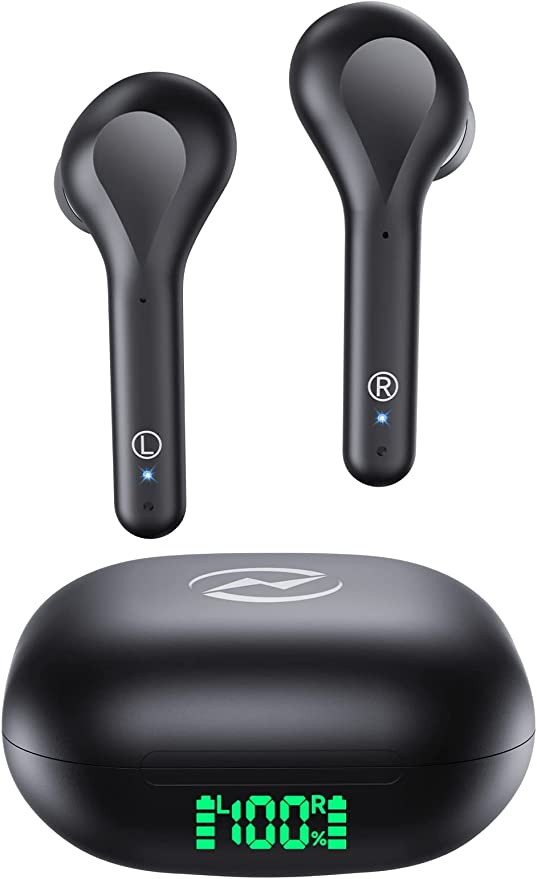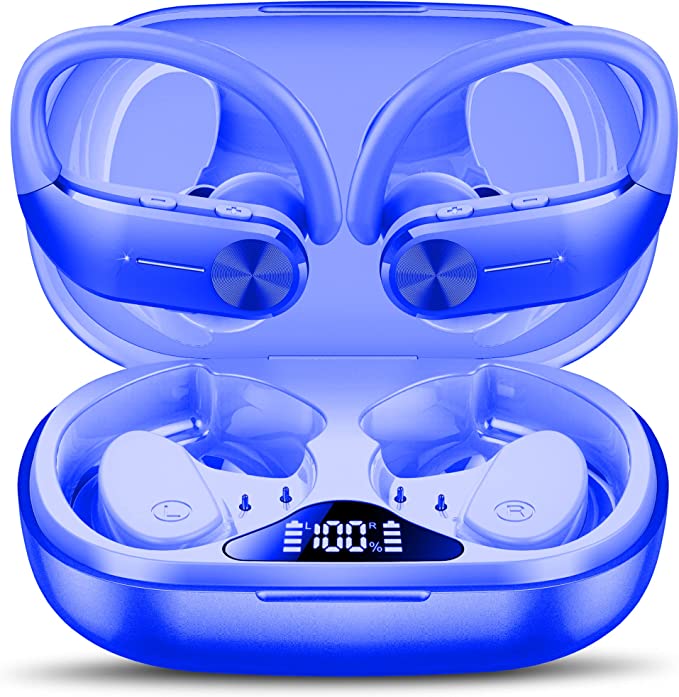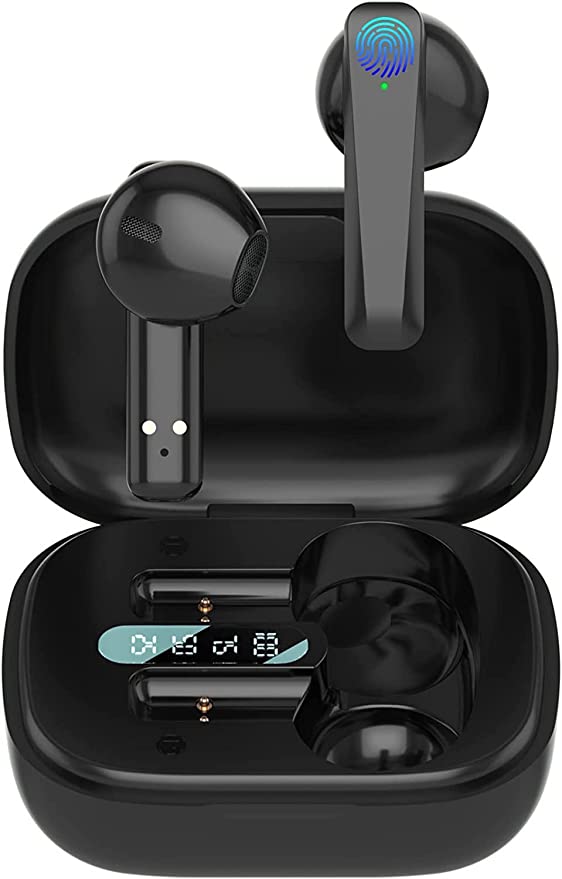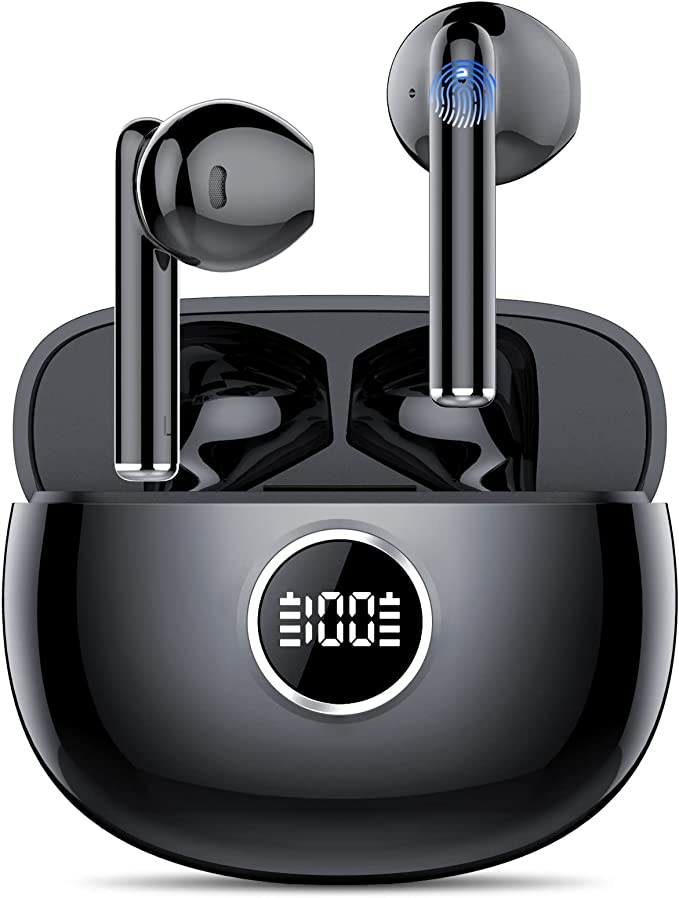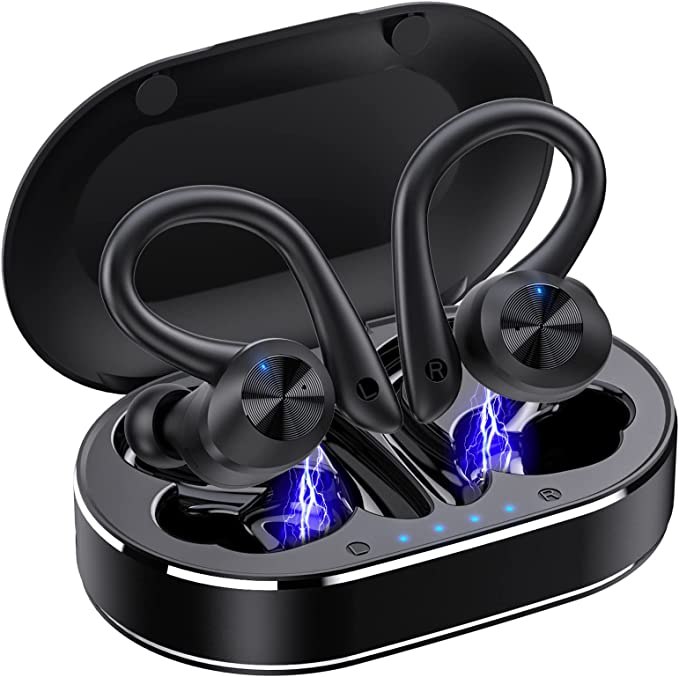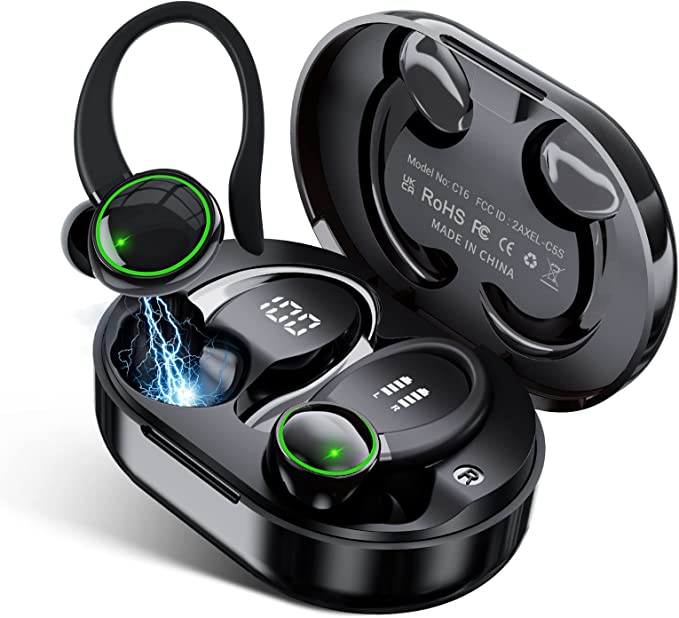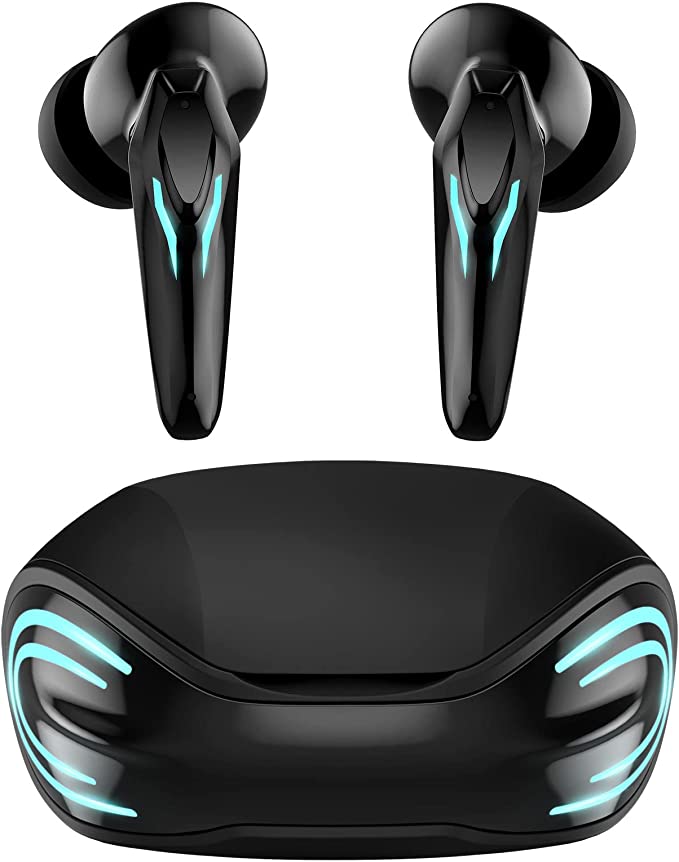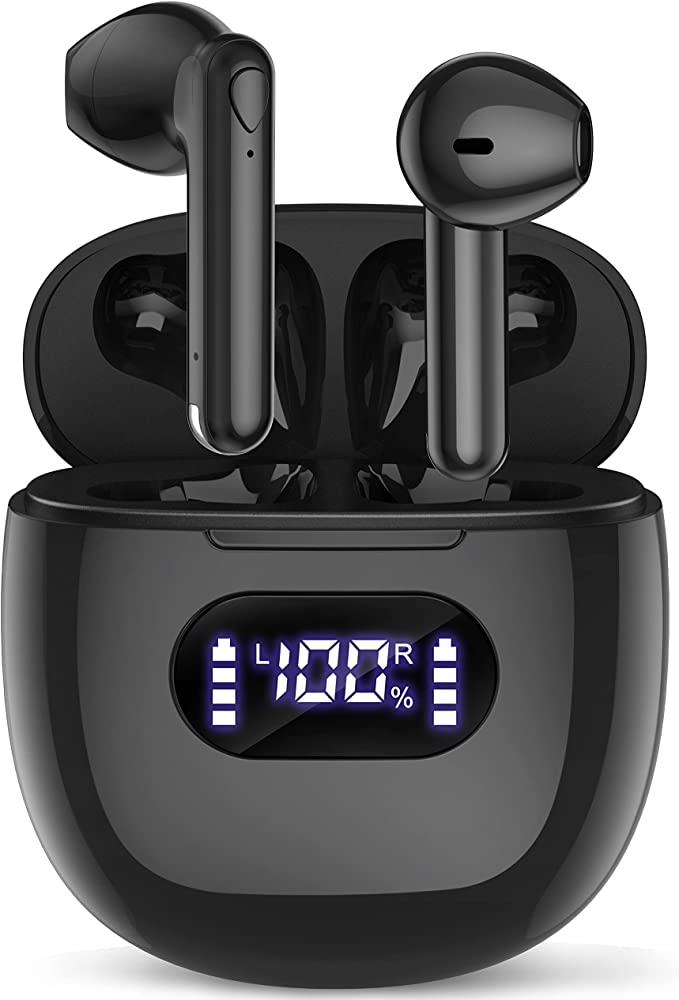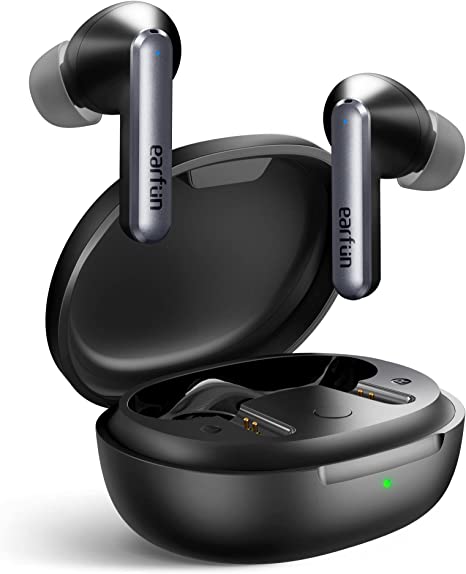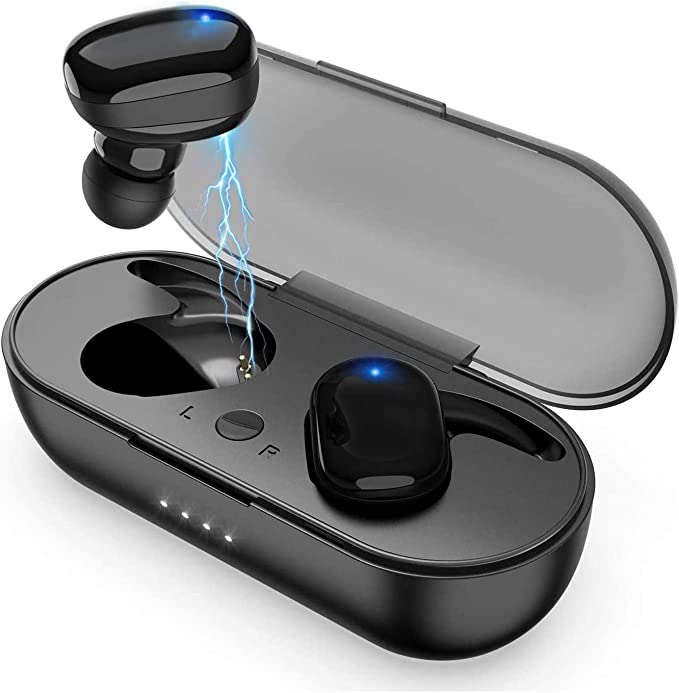Samsung Galaxy Buds Pro: The Deep Science Behind Your Immersive Audio Experience
Update on May 29, 2025, 4:26 p.m.
Listen closely. The world around us is a vibrant, chaotic, and often overwhelmingly loud orchestra. From the gentle rustle of leaves to the insistent blare of city traffic, our ears are constantly navigating a complex soundscape. In this era of perpetual motion and connection, the quest for a personal sanctuary of sound – a bubble of immersive audio or a crystal-clear line of communication – has led to remarkable innovations. True wireless earbuds have emerged as tiny technological marvels, promising freedom from wires without compromising on the richness of our auditory experiences.
Among these, the SAMSUNG Galaxy Buds Pro stand out, not just as a sleek accessory, but as a confluence of sophisticated acoustic engineering, advanced signal processing, and user-centric design. But what truly makes these compact companions sing? How do they silence the cacophony, reproduce the nuances of a symphony, or ensure your voice cuts through the noise? Join me, as we embark on an enlightening journey, much like a sound detective, to unravel the scientific principles and ingenious technologies. Let’s examine what is nestled within these earbuds, transforming your everyday listening into something extraordinary.

The Art of Silence: How Active Noise Cancellation (ANC) Creates Your Personal Oasis
Imagine stepping from a clamorous street into a hushed library. That’s the kind of transformative peace Active Noise Cancellation (ANC) technology aims to deliver, right into your ears. But this isn’t magic; it’s a fascinating application of acoustic science.
The Challenge of Noise and the Yearning for Quiet: Our modern environments are saturated with low-frequency, persistent noises: the drone of an airplane engine, the hum of office air conditioning, the rumble of a train. These sounds can be fatiguing, distracting, and can force us to crank up music volume to unhealthy levels. ANC is engineered to combat precisely these types of intrusive sounds.
The “Anti-Sound” Alchemy: At its heart, ANC operates on the principle of destructive interference – a concept as elegant as it is effective. Think of it like a perfectly timed “sound tug-of-war” where opposing forces cancel each other out. * Microphones as Vigilant Sentinels: The Galaxy Buds Pro, according to Samsung’s product information, employ microphones (likely both externally to pick up ambient noise and internally to monitor sound near your eardrum) that act as tiny, vigilant ears. These microphones constantly sample the surrounding environmental noise. * The Digital Brain and the “Anti-Noise” Wave: This captured noise information is then fed to a sophisticated Digital Signal Processor (DSP) within the earbuds. This chip acts as the “brain” of the operation. In real-time, it analyzes the incoming noise waveform and generates a new sound wave that is precisely 180 degrees out of phase – an “anti-noise” or “anti-sound” wave. * The Sound of Silence Emerging: This meticulously crafted anti-noise wave is then played through the earbud’s own speakers. When this anti-noise meets the original, unwanted environmental noise at your eardrum, they effectively cancel each other out. The peaks of one wave meet the troughs of the other, resulting in a significant reduction in the perceived ambient sound. What you experience is a dramatically quieter backdrop, allowing your music or podcasts to shine through with greater clarity at lower, safer volumes.
Beyond Mere Silence: Intelligence and Adaptability: The “Intelligent” in “Intelligent Active Noise Cancellation” (as described for the Buds Pro) suggests a layer of sophistication beyond basic cancellation. This could involve adaptive algorithms that adjust the cancellation profile based on the changing nature of the surrounding noise. * Ambient Sound Mode – Welcoming the World Back In: Sometimes, complete isolation isn’t desirable or safe. The Galaxy Buds Pro offer adjustable Ambient Sound levels (up to four, with advanced settings on compatible Android devices, as per the product details). This feature essentially reverses the ANC process to a controlled degree. The microphones continue to pick up external sounds, but instead of canceling them, the DSP selectively allows certain sounds (like conversations or traffic announcements) to pass through to your ears, amplified if necessary. It’s like opening a sonic window to the world without removing your earbuds. * Voice Detection – The Intuitive Switch: The described “Voice Detection” feature, which automatically lowers media volume and switches to Ambient Sound mode when it detects you’re speaking, is a prime example of smart audio processing. This likely employs AI-driven algorithms trained to recognize the specific acoustic patterns and frequencies of human speech, triggering the mode change seamlessly. Imagine effortlessly engaging in a quick chat without fumbling for controls – that’s the convenience it aims for.
User Scenarios & Engineering Thoughts: Picture this: you’re on a long flight, the engine’s drone a constant companion. With ANC, that drone recedes, replaced by the immersive soundscape of your movie or the quiet focus of your work. Or, you’re navigating a busy city street; Ambient Sound ensures you hear important traffic cues while still enjoying your playlist. From an engineering perspective, the challenges are immense: miniaturizing all this technology, ensuring low power consumption, minimizing any “eardrum suck” or pressure sensation some users experience with ANC, and effectively combating wind noise, which can be particularly tricky for external microphones.

The Soul of Melody: How Dual Drivers Weave Sonic Tapestries
For any audiophile, or indeed anyone who truly loves music, sound quality is paramount. How can such diminutive earbuds reproduce the full, rich spectrum of a live orchestra or the deep, resonant bass of an electronic track? The secret within the Galaxy Buds Pro lies in their two-way speaker system, featuring a dedicated 11mm woofer and a 6.5mm tweeter in each earbud.
The Challenge of Full-Spectrum Sound in Miniature: A single, small speaker driver often struggles to accurately reproduce both the deep rumbles of bass and the sparkling clarity of high notes simultaneously. It’s a bit like asking a single musician to perfectly play both a tuba and a piccolo with equal finesse. This is where the elegance of a multi-driver system comes into play.
“Dual Engines” for Distinct Sonic Duties: * The 11mm Woofer – The Heartbeat of Bass: The woofer is the larger of the two drivers, specifically engineered to handle low-frequency sounds – the bass and mid-bass that provide music with its warmth, depth, and impact. Think of the satisfying thump of a kick drum or the resonant growl of a cello. Larger diaphragms, like this 11mm one, can move a greater volume of air. This physical displacement is crucial for generating the powerful sound pressure waves our ears perceive as rich, full-bodied bass. It’s the driver that makes you feel the music. * The 6.5mm Tweeter – The Sparkle of Highs: The tweeter, a smaller and lighter driver, is tasked with reproducing high-frequency sounds – the treble that gives music its clarity, detail, and airiness. This includes the shimmer of cymbals, the crispness of a hi-hat, or the delicate articulation of a flute. Because high frequencies involve very rapid vibrations, a smaller, nimbler diaphragm can respond more quickly and accurately, preventing high notes from sounding dull or smeared. It’s the driver that delivers the “sparkle” and “definition.”
The Art of Crossover – Harmony in Division: For these two specialized drivers to work together seamlessly, a crucial element is the “crossover.” While the provided product details don’t specify the exact crossover mechanism (it could be a passive electronic circuit or handled digitally by the DSP), its role is to intelligently divide the incoming audio signal. It directs the low frequencies to the woofer and the high frequencies to the tweeter, ensuring each driver operates within its optimal range. This prevents a single driver from being overwhelmed and reduces distortion, leading to a more balanced, detailed, and dynamic sound signature – what Samsung describes as “High Quality Sound.”
Beyond Hardware: The Magic of Tuning and Software: While the dual-driver hardware lays a strong foundation, the final sonic character of the earbuds is also significantly shaped by acoustic tuning of the earbud’s internal chamber and by software. The Galaxy Wearable app, for instance, often provides equalizer (EQ) presets or even a customizable EQ. This allows users to tailor the sound profile to their personal preferences or to better suit different genres of music, adding another layer to the pursuit of that perfect sound.
Scene Stealers: Imagine listening to a complex orchestral piece: the 11mm woofer would bring out the gravitas of the double basses and timpani, while the 6.5mm tweeter would articulate the soaring violins and a piccolo’s delicate trills, all without one overshadowing the other. Switch to an EDM track, and the woofer delivers that satisfying bass drop, while the tweeter keeps the synthesized high notes sharp and clear.
A Note on Codecs: It’s also worth remembering that the way audio is wirelessly transmitted impacts quality. Bluetooth codecs like SBC (Subband Codec, the basic mandatory one), AAC (Advanced Audio Coding, favored by Apple), and Samsung’s own Scalable Codec (which adaptively adjusts bitrate to balance quality and connection stability with compatible Samsung phones) play a vital role in how much audio information actually reaches those drivers. A great driver system can only sound its best if it’s fed a high-quality signal.

The Bridge of Conversation: Speaking Clearly Amidst the Clatter
In our interconnected world, earbuds are not just for music; they are essential tools for communication. Whether it’s a critical business call, a virtual meeting, or a heartfelt chat with a loved one, being heard clearly is non-negotiable. The Galaxy Buds Pro are engineered for “Crystal Clear Calls,” aiming to make your voice stand out even when the world around you doesn’t quiet down.
The Perennial Challenge: Voice vs. Noise: One of the most common frustrations with using earbuds for calls is the “tunnel effect” or your voice sounding muffled, often accompanied by an unwelcome chorus of background noise being transmitted to the person on the other end. Your own voice needs to be captured cleanly, and the surrounding chaos needs to be suppressed.
The “Array of Ears” – Microphones Working in Concert: While the exact number and placement of microphones dedicated to voice pickup aren’t detailed in the provided product description, modern high-quality earbuds like the Buds Pro invariably use a multiple microphone array. Samsung states their “new design reduces background noise, so your voice comes through loud and clear.” This strongly implies such a system. Here’s how it generally works: * Beamforming Technology (A Likely Candidate): With multiple microphones strategically placed on each earbud, it’s possible to implement beamforming. This is a signal processing technique where the microphone array electronically “steers” its listening focus towards a specific direction – in this case, your mouth. By intelligently combining the signals from each microphone, sounds originating from your voice’s direction are amplified, while sounds coming from other directions (the noisy environment) are attenuated or canceled out. It’s like having a highly directional microphone pointed right at your lips. * Noise Suppression Algorithms – The Intelligent Filter: Beyond just focusing on your voice’s direction, sophisticated noise suppression algorithms, typically running on the onboard DSP, play a crucial role. These algorithms are trained to distinguish the acoustic characteristics of human speech from various types of environmental noise (e.g., traffic, chatter, wind). They then actively filter out or reduce these unwanted sounds from the microphone signal before it’s transmitted. There might even be an AI component, where the system has learned from vast datasets of voice and noise to become even better at this differentiation.
Physical Design Matters Too: The “new design” mentioned by Samsung also likely incorporates physical acoustic considerations. This could include shaping the earbuds to shield the microphones from wind, or strategically placing acoustic vents to manage air pressure and reduce wind turbulence near the microphone ports, which is a common culprit for garbled call audio outdoors.
Real-World Clarity: Imagine you’re walking down a busy street, a cacophony of car horns and chatter around you. With this technology, the person you’re calling should primarily hear your voice, with the street noise significantly subdued. Or, you’re in a bustling café trying to conduct an important meeting; your colleagues should be able to focus on your contributions, not the clatter of coffee cups or the conversations at the next table. This focus on call clarity is increasingly vital as remote work and on-the-go communication become the norm.

The Unseen Shields and Unbroken Links: Everyday Durability and Connection
Beyond the intricate dance of sound waves and algorithms, the practical aspects of how these earbuds withstand daily life and maintain their connection are just as critical to the overall experience.
Braving the Elements: Decoding IPX7 Water Resistance: Life happens. A sudden downpour during your run, an accidental splash, or an intense workout session – your earbuds need to be resilient. The Galaxy Buds Pro come with an IPX7 water resistance rating. Let’s break that down: * The “IP” Code: “IP” stands for “Ingress Protection,” and it’s a standard (IEC 60529) that classifies the degree of protection provided by enclosures of electrical equipment against the intrusion of foreign objects (like dust) and, in this case, moisture. * The “X” and the “7”: The “X” in IPX7 means the earbuds haven’t been officially rated for dust protection under this specific standard (or the manufacturer chose not to test/declare it). The crucial digit here is the “7.” This number signifies a high level of water protection, specifically meaning the earbuds are protected against the effects of temporary immersion in fresh water under standardized conditions: up to 1 meter (about 3.3 feet) for up to 30 minutes. * The Engineering Behind It: Achieving this level of water resistance in such a small and complex device involves meticulous engineering. This typically includes precision-fit casings, rubber O-rings or gaskets sealing any openings (like microphone ports or seams), and potentially the use of hydrophobic (water-repellent) nano-coatings on internal electronic components for an extra layer of defense. * Practical Peace of Mind (with Caveats): This IPX7 rating means you can confidently wear your Buds Pro during sweaty workouts or if you get caught in the rain. However, it’s important to note the limitations, as Samsung rightly advises: it’s not recommended for beach or pool use (saltwater, chlorine, and other chemicals can be corrosive and may compromise the seals over time). Also, crucially, the charging case itself is not water-resistant. The earbuds must be thoroughly dried before being placed back into the case to avoid damage.
The Lifeline of Sound: Bluetooth 5.0 Connectivity: The magic of true wireless audio hinges on a stable and efficient wireless connection. The Galaxy Buds Pro utilize Bluetooth 5.0. This version of the ubiquitous wireless standard brought several enhancements over its predecessors: * Improved Speed and Range (Potentially): Bluetooth 5.0 offers the capability for up to twice the data transfer speed and up to four times the range compared to Bluetooth 4.2 LE, although real-world performance depends on various factors including the paired device and environmental interference. For audio, higher data throughput can be beneficial for supporting more advanced, higher-fidelity audio codecs. * Enhanced Power Efficiency: Bluetooth Low Energy (BLE), a core part of the standard, is designed for minimal power consumption, which is vital for small, battery-operated devices like earbuds, helping to achieve that “long-lasting battery life” Samsung mentions. * Better Coexistence: Bluetooth 5.0 also includes features to reduce interference with other wireless technologies (like Wi-Fi), leading to a more stable and reliable audio stream with fewer dropouts. * The Foundation for Advanced Features: A robust Bluetooth connection is the bedrock upon which features like Active Noise Cancellation, Ambient Sound, and high-quality audio streaming are built. Any hiccup in this wireless link can degrade the entire experience.
These “background” technologies – water resistance and a solid Bluetooth link – might not be as overtly “sci-fi” as ANC, but they are fundamental to ensuring your Galaxy Buds Pro are reliable, enjoyable companions for your daily adventures, rain or shine, connected or on the move.
Intuitive Whispers & Smart Interactions: The Ergonomics of Control and Awareness
The most advanced technology can feel cumbersome if interacting with it isn’t seamless and intuitive. The Galaxy Buds Pro incorporate several features aimed at making your listening experience not just high-fidelity, but also effortless and intelligent.
A Touch of Genius: The Science of Capacitive Controls: Gone are the days of fumbling with tiny physical buttons. The Galaxy Buds Pro feature touch-sensitive surfaces, allowing you to control playback, manage calls, and toggle features with simple taps and gestures. This is typically achieved through capacitive touch sensing: * How it Works: Your body is naturally conductive. When your fingertip touches the earbud’s surface, it subtly changes the local electrostatic field or capacitance at that point. Sensors beneath the surface detect this change and register it as a touch input. Different patterns of taps (single, double, triple) or holds can then be programmed to trigger specific commands – play/pause, skip track, answer call, or activate ANC/Ambient Sound. * The Design Challenge: Sensitivity vs. Accidental Touches: One of the challenges with touch controls on such small devices is finding the right balance of sensitivity. Too sensitive, and you might accidentally pause your music every time you adjust the earbud. Not sensitive enough, and your intended taps might go unregistered. The user review provided in the initial data mentioned that “the buttons on these are way more reactive and sensitive,” highlighting this delicate balance. Manufacturers often refine this through firmware updates, and the Galaxy Wearable app may offer some customization of touch controls for compatible Android devices.
Ears That “Know”: Wear Detection for Seamless Playback: Have you ever pulled an earbud out to talk to someone, only to have your music or podcast continue blaring from the dangling bud? The Galaxy Buds Pro likely incorporate wear detection sensors to prevent this and offer a more fluid experience. * Sensing Your Presence: These sensors (often infrared proximity sensors or sometimes capacitive sensors that detect skin contact) can tell when an earbud is actually in your ear versus when it has been removed. * Automatic Play/Pause: When you remove an earbud, the media playback automatically pauses. Pop it back in, and it resumes (this behavior can sometimes be customized in the companion app). This not only saves battery but also ensures you don’t miss a beat of your audio content. It’s a small touch, but one that significantly enhances the feeling of “smartness.”
The Hub of Customization: The Galaxy Wearable App Ecosystem: While the earbuds themselves house much of the core technology, their full potential, especially for Android users, is often unlocked through the Galaxy Wearable app. Samsung’s product information explicitly states that “Advanced settings such as Ambient Noise Levels available only on Android devices running Android 7.0 or higher and 1.5GB RAM or above. Advanced features enabled through the Galaxy Wearable app on Android, available through the Google Play Store.” * Beyond Basic Controls: This app typically provides access to firmware updates (which can bring new features or improve existing ones), customizable equalizer settings, detailed ANC and Ambient Sound level adjustments, touch control remapping, a “Find My Earbuds” feature, and potentially access to unique features like 360 Audio settings when paired with compatible Galaxy devices. * The Software-Hardware Synergy: This interplay between the physical hardware of the earbuds and the software ecosystem of the app is a hallmark of modern smart devices. It allows the product to evolve and adapt even after purchase, and for users to tailor the experience more precisely to their individual needs and preferences.
(A Glimpse into Immersive Sound: 360 Audio): While the provided data doesn’t delve into the specifics, the user review mentioned a “360 sound feature.” This likely refers to Samsung’s 360 Audio, which, when paired with compatible Galaxy devices and content, aims to create a more immersive, three-dimensional soundscape. This technology typically uses head-tracking (via sensors in the earbuds) to keep the sound field anchored to the playback device (like a phone or tablet) even as you turn your head. The effect is that sound sources appear to maintain their position in space relative to the screen, much like a virtual surround sound system, enhancing the sense of realism for movies or specially mixed music. This leverages sophisticated audio rendering algorithms to create this convincing spatial illusion.
These interactive and intelligent features transform the Galaxy Buds Pro from simple audio output devices into responsive and adaptable listening companions, aiming to make your engagement with sound as natural and unobtrusive as possible.
Epilogue: The Evolving Soundscape – Your Ears, Amplified by Intelligence
The journey through the inner workings of the SAMSUNG Galaxy Buds Pro reveals a microcosm of the incredible technological strides made in personal audio. From the delicate dance of anti-noise waves in Active Noise Cancellation to the precision engineering of dual-driver speaker systems, and the intelligent algorithms that clarify our calls and respond to our touch, these tiny devices are packed with science and ingenuity.
They represent more than just convenience; they embody a pursuit of auditory perfection and personalized experience. The ability to curate our own soundscape – to invite silence, to immerse ourselves in music, to connect clearly with others – has a profound impact on how we work, play, and navigate the world.
As we look to the horizon, the evolution of audio technology shows no signs of slowing. We can anticipate even smarter noise cancellation that adapts more seamlessly to an ever-wider range of environments, sound reproduction that becomes virtually indistinguishable from live performance, and AI-driven features that learn our preferences and anticipate our needs. The future of listening is likely to be even more personalized, more context-aware, and more deeply integrated into the fabric of our lives.
The SAMSUNG Galaxy Buds Pro, with their blend of acoustic science and smart features, offer a compelling snapshot of where we are today. They remind us that even the smallest pieces of technology can house a universe of complexity, all designed with a singular aim: to enhance our connection to the rich, vibrant, and ever-evolving world of sound. And that, in itself, is a symphony worth listening to.

